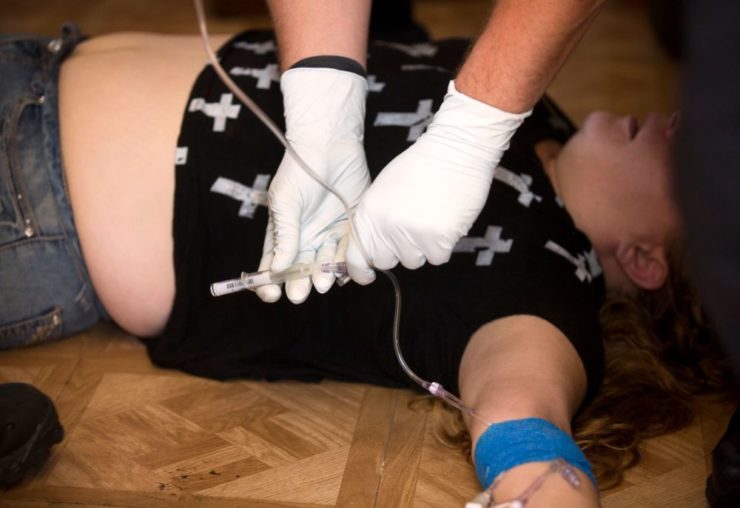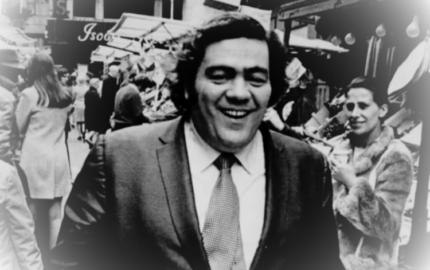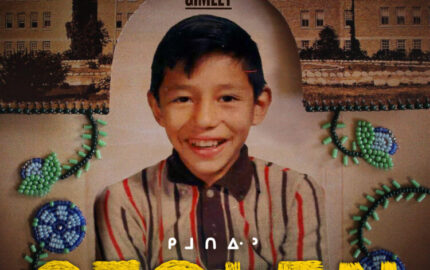As far as Terry DeMio knows, she's the only journalist in the country with the title “heroin reporter.” She's been covering the opioid epidemic for The Cincinnati Enquirer for five years, including two on the beat full time. Yet DeMio and her editors felt they needed to do more to illustrate the toll addiction was taking on their community.
Over one week in July, the paper sent out more than 60 reporters, photographers and videographers to document the impact of heroin in Greater Cincinnati. They spent time in jails, courts, methadone clinics and psychiatric hospitals. They spoke with addicted prostitutes, adoptive parents of kids orphaned by the crisis and a mother grieving her son's death. They witnessed overdoses, listened to 911 calls, attended recovery meetings and rode along with police officers chasing users and dealers. By the end of seven days, they counted 18 deaths and 180 overdoses—just a typical week.
"We just wanted to show people: This is what a heroin epidemic looks like."
The result, published in the Cincinnati Enquirer and its affiliate USA Today on Sept. 10, was a riveting portrait of the human face of heroin. Instead of a traditional narrative, the project was presented largely as a series of chronological vignettes, interspersed with photos, social media posts, 911 recordings and rap lyrics. The mixed-media collage effectively showed that virtually no local geography or institution was left untouched by heroin.
A deluge of abstract headlines about the opioid epidemic has by now inured many readers to the crisis' painful reality. This immersive approach is likely to make some tears well up.
I talked about the undertaking with DeMio and Amy Wilson, who edited the project and is the Enquirer's storytelling coach. Our conversation has been slightly edited for length and flow.
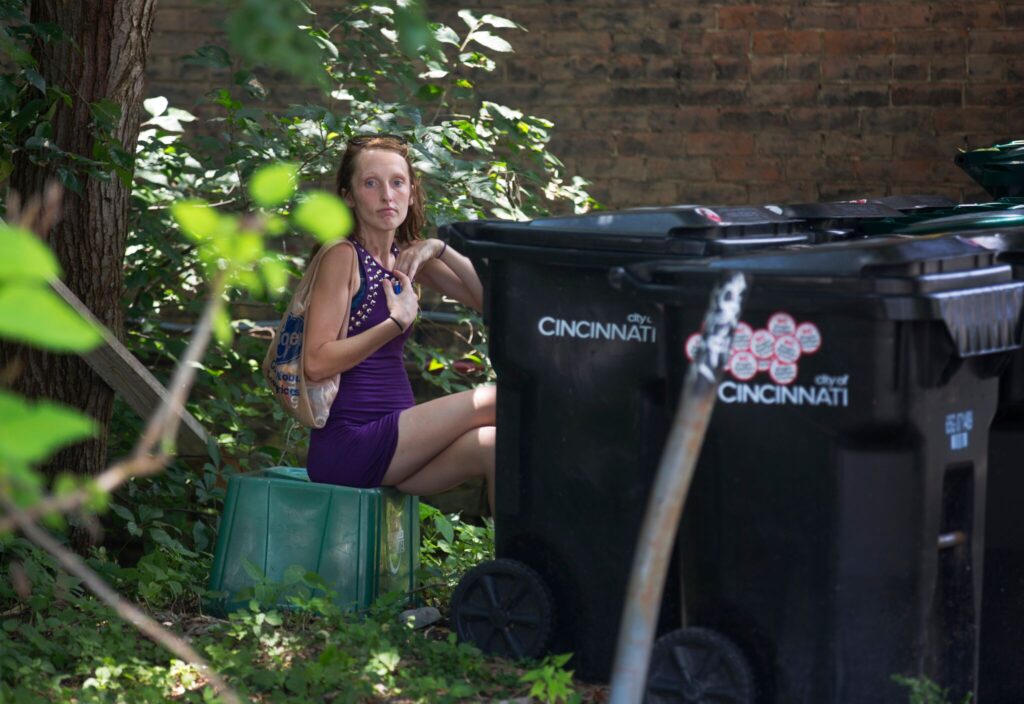
In today’s cash-strapped newsrooms, putting 60 journalists on a story is a lot. What made you think this was warranted, and what were you hoping to accomplish?
Amy: Terry had done groundbreaking and astonishing work, and this story had been on her and reporter Dan Horn's long-term list. They mentioned it to me one day, and it became clear that this was not a story Terry could do by herself. As wonderful as she is, she can’t be everywhere at once. We had been showing people small segments of the world of heroin -- we were not showing them heroin. In late May, I took the idea to Peter Bhatia [then editor of The Cincinnati Enquirer, who left to edit the Detroit Free Press in August], and without blinking an eye, he said, “Sure, let's do this.”
Terry: What I see every day is what you saw in that project. I'm constantly immersed in it, yet I know that people around me, even many who are compassionate, really didn't see it the way I did. We just wanted to show people: This is what a heroin epidemic looks like.
How did the project work logistically?

Amy: Terry, Dan, two photographers and I sat around and made a comprehensive wish list of what wanted. We were working completely off of Terry's contact list. A lot of people and agencies were willing to help us and give us access because Terry had done all of this great work, and they trusted her. We started having general newsroom sessions describing what we would do, then we had a meeting with reporters in which they could tell us whether there was a piece they particularly wanted to do. We had seven college interns who were fully involved. We offered every reporter to have a partner go with them if needed, but no one took us up on it.
We also had a brownbag lunch in which we explained to people why this reporting was different from traditional reporting. We wanted as much observation as humanly possible. We didn't want people to ask, “What do you think about the heroin epidemic?” or anything except about what was actually happening on the ground in front of them.
Chrissie Thompson, our Capitol bureau chief, gave a tremendous assist by setting up the schedule for the actual week. We asked reporters to come back within 24 hours and give us an overview of what happened. Then we gave them up to a week to get us the notes (they could take longer to get documents). If the reporter presented material we thought wasn't rich enough, Terry and Dan would go back and interview the reporter. They were looking for details.
Terry: We made it clear to the staff that they'd probably end up with four inches. We were looking for scenes, like a movie clip: What are you seeing? What are you hearing? What's going on around you? We had piles of notes, and I can't even imagine telling you how much was left on the floor. We also had a small data team led by Carrie Blackmore Smith that contacted 45 agencies. We didn't use much of what they collected, because we wanted to keep this spare and obvious.
Why did you decide to take the angle of one week, and how did you choose the week?
Terry: I was talking to Dan, and I think I said we should do a day or 48 hours. He said, “We'd have to do a whole week to show this kind of thing.” There wasn't another period of time that seemed to make sense.
Amy: We also felt we needed to keep it contained and not let it run amok. We selected seven days because we figured that would cover days, nights and weekends. We chose a week out of the air in summer, when we wouldn't have to deal with hideous weather. We wanted ordinary, ordinary, ordinary.
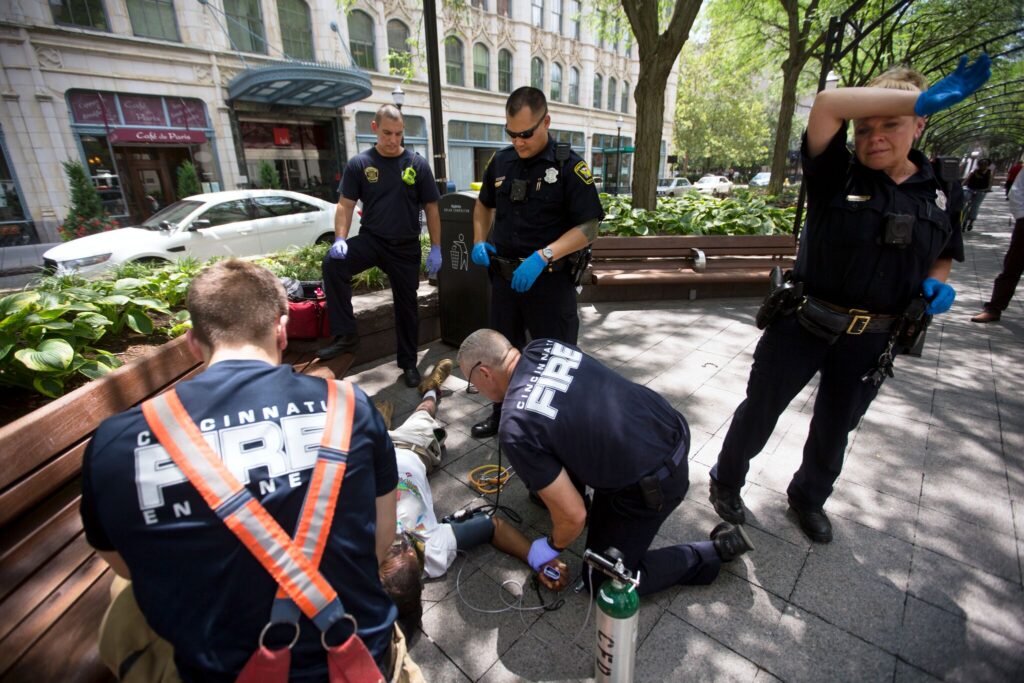
How did you whittle down all the material you had at the writing stage?
Amy: Because we locked into the structure so early, the chronology helped organize the material. We had a war room where we put up index cards for every day of the week, then anecdotes and photos underneath them. Then we said, “Is this one in or out?” We were unsurprised by the fact that we had too much. We thought about having an epilogue that included a funeral and the fact that one subject had died of an overdose, but we eventually killed that because we wanted to stay in the time frame of seven days.
You had just one story, called “The Lost Boys,” that you followed across the entire week. It was about two mothers who were friends, one of whom was dealing with her son's overdose death and one of whom was worried about her son's addiction. Why did you decide to have that continuity?
Amy: Before we did any reporting, Dan, Terry and I had a lot of discussions about what the piece was going to look like. We wanted to make sure it would make sense structurally, but we knew it wasn't going to have a beginning, middle and end. We had no idea if any arc would appear, because we weren't going back to anything. We started and ended at a jail because we wanted to have bookends. But we didn't know if we'd find a story that would give a reader a through-line. When this story popped up, we gave the reporters instructions to talk to them every day so that we'd have a structural narrative. It turned out to be quite compelling.
How did you approach conveying emotional depth without being overly sentimental?
Terry: From my experience, you do this by showing it, by writing what you see, by taking in others' reactions. I wondered whether some families who'd suffered so much from this disease would be offended or alarmed by what they saw, but the comments I got were, “You guys are so compassionate.” Somehow it shows through if you just observe, record and use your physical senses.
"In some ways, journalists can get bogged down with trying to give too much context—I'm going to take a huge hit for this—when in fact you have an engaged community."
As you mentioned, you stuck to what was in front of you for this project. What would you say to those who'd argue the piece was missing context and history?
Terry: I've covered those topics to death: Medication-assisted treatment, jail overcrowding, we can't arrest our way out of this, the pharmaceutical companies, and on and on. I will continue to follow those things and have an upcoming story about a dearth of a certain kind of treatment here. But we all felt that we needed to do something bold and different.
Amy: We’ve done a lot of solutions stories. I’m not going to apologize for not doing that here. We never decided we were going to take on a comprehensive look at heroin in America. The idea was a lot simpler than that. In some ways, journalists can get bogged down with trying to give too much context—I'm going to take a huge hit for this—when in fact you have an engaged community. Heroin is known enough around here that you don't need to include the names and costs of everything to see these human beings and this crisis plainly. We tried to assume that you had a base knowledge, for better or worse, because the humanity was the point.
What reaction have you gotten to the project?
Terry: We’ve had a lot of very warm and positive community feedback. I've gotten tearful thank-yous for the compassion we showed. We also heard from Ali's mom, who had been looking for her. She'd seen a picture of Ali [a sex worker addicted to fentanyl] in the piece.
Amy: I'll be honest with you: We're so surprised at the response! When we published this, there were hurricanes going on, and it was the first day that the NFL played. My greatest hope was that the community that we live in would take notice. The fact that we’ve heard from around the world—Russia, Spain, Finland, New Zealand—is beyond what I expected. The fact that Arianna Huffington and Nicholas Kristof retweeted the story is far above anything we could’ve hoped for. There is a lot of coverage of heroin, and we never imagined this would rise above the noise. We’re so grateful that we accomplished what we set out to do, which is to generate compassion for the people going through this, for their families and for the people that deal with this every day without recognition. This is a hard, hard, hard epidemic, and we’re not getting better at it.
